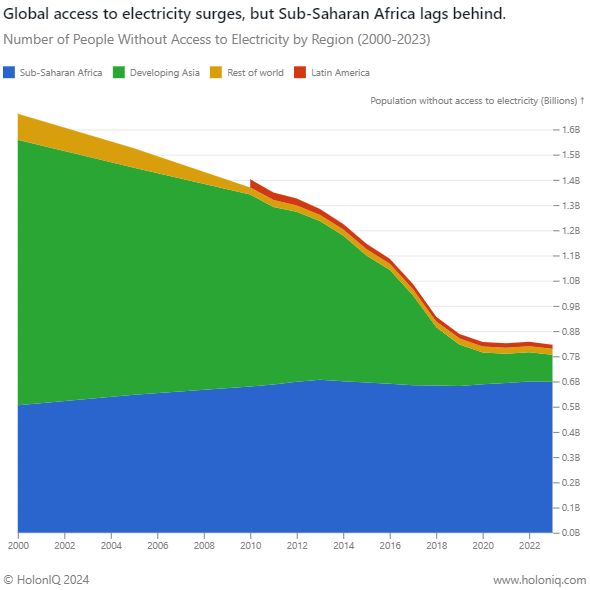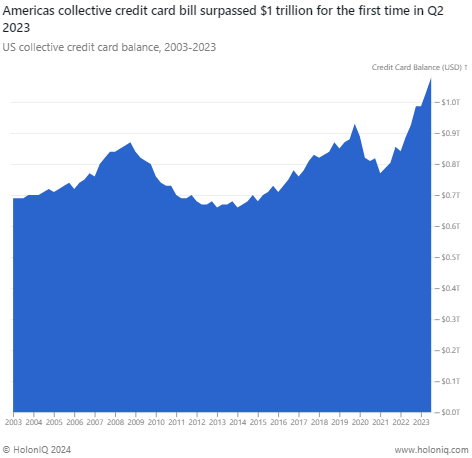🌎 Chart of the Day #4
For over 5 years, HolonIQ has been visualizing the global impact economy. Now, with more than 1 million charts on Climate Tech, Education, Healthcare, and the Global Economy, we're kicking off 2024 with a new daily newsletter for data-driven, global leaders who want to understand trends in strategic industries.
Today's Topics
- 💡 Electricity Access. Sub-Saharan Africa lags in electricity access
- 💰 Rising Debt. US Credit Card Balance Tops $1 Trillion.
- 😔 Mental Health. Sadness and Suicidality on the Rise Among US Students.
Have feedback or ideas for us? Email hello@holoniq.com — we'd love to hear from you!
💡 Sub-Saharan Africa lags in electricity access
At a global level, the percentage of people with access to electricity has steadily increased over the last few decades. In 2000, just under 80% of the world's population had access; this has increased to more than 90% by the 2020s. In the early 2000s, over 1 billion people did not have access to electricity in developing Asia, however, in 2020 that figure was reduced to 100 million people. However, the same cannot be said for sub-Saharan Africa, as over half a billion people do not have access to electricity since the early 2000s.

Source: IEA
💰 US Credit Card Balance Tops $1 Trillion
Credit card balances in the US increased by $45 billion, from $986 billion in Q1 2023 to an all-time high of $1.03 trillion in Q2 2023, marking a 4.6% quarterly increase. This reflects robust consumer spending as well as higher prices due to inflation. Credit card delinquencies are at an 11-year high, as measured using a four-quarter average. However, the quarter-to-quarter trend appeared less alarming, with New York Fed researchers noting a levelling out near pre-pandemic levels in the most recent two quarters.

Source: Federal Reserve Bank of New York
😔 Sadness and Suicidality on the Rise Among US Students
Globally, student mental health has been on a decline but was exacerbated by pandemic school closures and isolation. In the current US educational landscape, over 40% of US school students experienced persistent feelings of sadness or hopelessness, and over 20% seriously considered attempting suicide. Education institutions (and whole systems) are increasingly integrating technology-led solutions to support student well-being as part of their broader student support services.

Source: Centers for Disease Control and Prevention
Thanks for reading. Have a great week ahead!
Have some feedback or want to sponsor this newsletter? Let us know at hello@holoniq.com
